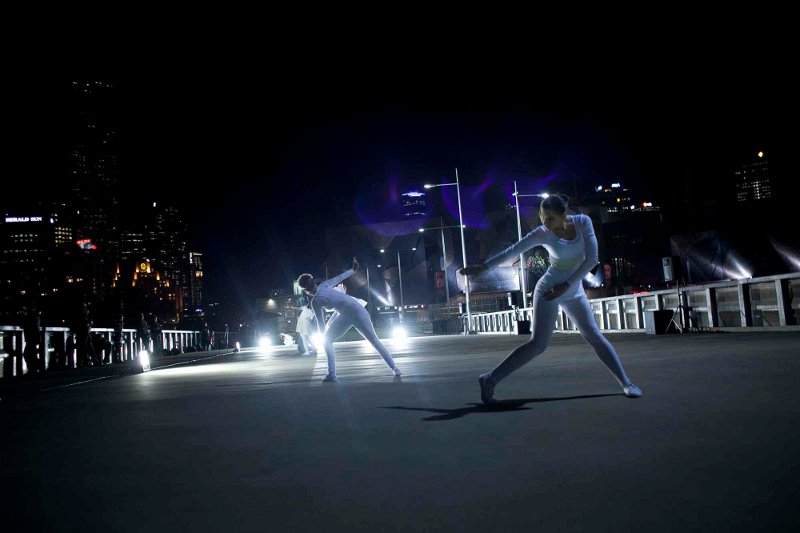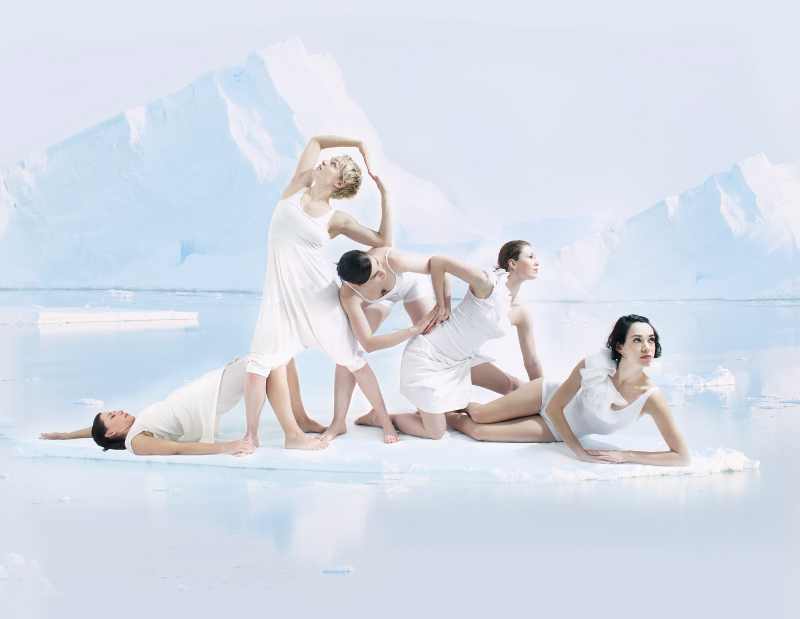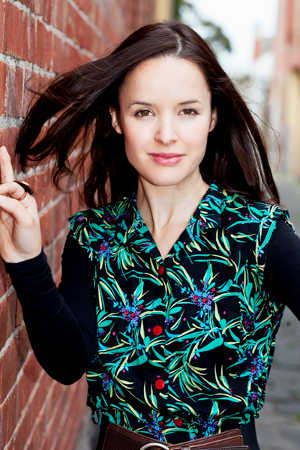Living Data
Science Art & Talks
The experiential process of observation and reflection is key to art and science
and is an essential component in understanding interdependence
of all species and ecosystems, terrestrial and aquatic.
Paul Fletcher Animator
Science Art & Talks
Living Data Program for the 2013 Ultimo Science Festival, Sydney, September 12-21.
Polarity Dance (projection) by Christina Evans
Antarctic ice is melting. Dancers bring the movement and nature of Antarctic ice into public spaces around the world.

Polarity by Christina Evans, dance performance at Federation Square for the 2012 Melbourne Fringe Festival 2011

Evans and her dancers perform Polarity.
Photo by Lucia Ondrusova
Human bodies dance the ice. This intrinsically connects it to us and also reflects on the impact humans are having on the ice.
In 2010 I travelled to Antarctica on an Australian Antarctic Arts Fellowship. I spent time at Davis and Mawson stations and although only there a short time I connected with the ice in many ways including from above in a helicopter, staying in isolated huts, sleeping outside, an iceberg cruise and being lowered into an ice crevasse. I explored how the shapes and layers of an ice structure reveal its movement history; the many processes of action and reaction that created its current, yet continually changing form. I collected a vast range of movement and choreographic stimulus, ice imagery, visual and written responses and sensory impressions. The colour, textures, diversity, scale and raw beauty of the ice was phenomenal. I researched the different ice types such as glacial ice, sea ice, icebergs, brash ice and their extreme diversity, composition and nature. I looked at ice cycles - such as Antarctica doubling in winter and contracting in summer that to me is like a breathing body. I looked at ice behaviours as well the signs of climate change. I explored many papers, books and websites. I serendipitously met sound artist Philip Samartzis on the journey, the only other Australian Antarctic Arts Fellow that year, who I then collaborated with. The Body of Ice soundscape was born from raw, richly diverse and intricate sounds of Antarctic ice recorded by Philip in Antarctica.
The overall choreographic structure of Body of Ice follows the creation cycle and seasonal cycle of Antarctic ice. A journey from the ice plateau expands outwards through glacial flow, ice shelf formation and the breakage of icebergs, along with a range of ice interactions and qualities. A retreat of sea ice during the summer, plus the signs of excessive melting of Antarctic ice forms the ending - a vivid image of bodies melting away.
Throughout the work dancers articulate ice patterns, imagery and dynamics at a cellular level as well as through their connections with each other. The work represents the movement, cycles and extreme nature of Antarctic ice. It also presents the human connection to ice - having human bodies dance the ice intrinsically connects it to us and also reflects on the impact humans are having on the ice. Body of Ice was developed into full length work Polarity, performed the 2011 Melbourne Fringe Festival on a large rooftop space surrounded by the city at Federation Square, a cultural hub of Melbourne. The presentation integrated the cityscape which reflected our way of life at this point in time and how it is affecting the ice.

Christina Evans 2013
I am a graduate of the Western Australian Academy of performing arts and work as a dance artist across film, music video, live performance and hybrid-art. I have performed across Australia, the UK, Asia and Argentina. I direct and perform my own works including the Adelaide Fringe Festival sell-out Toys. My work Polarity debuted at the 2011 Melbourne Fringe Festival and Body Of Ice toured to Buenos Aires in 2012. I have starred in several films and music videos and continue to collaborate with a range dance artists for national and international film and stage productions.
Christina Evans 2012
Notes for exhibition designers:
Polarity, Ice Melt,and Polar Timemay be screened as a sequence through Biomesh screens.











